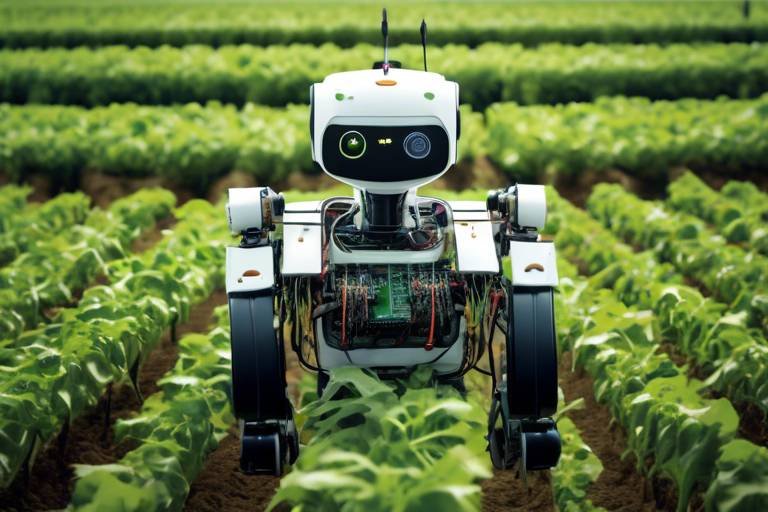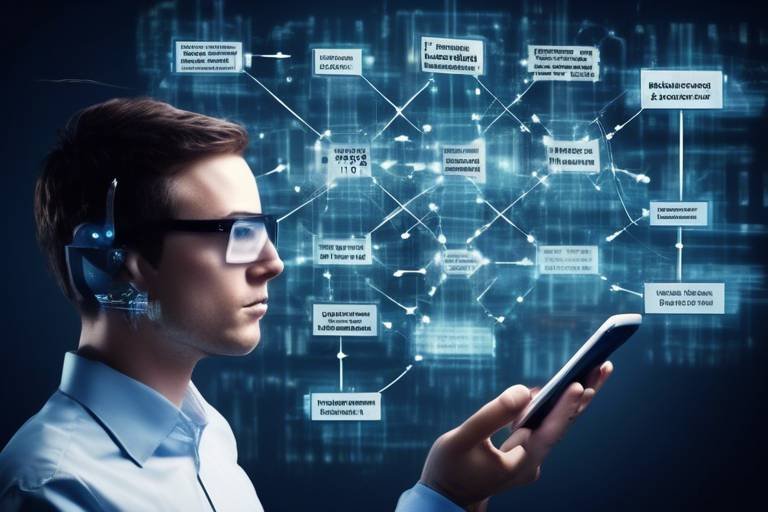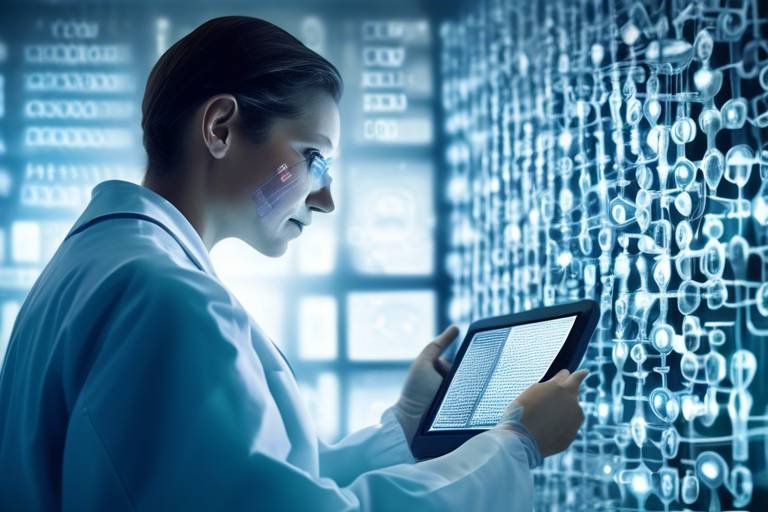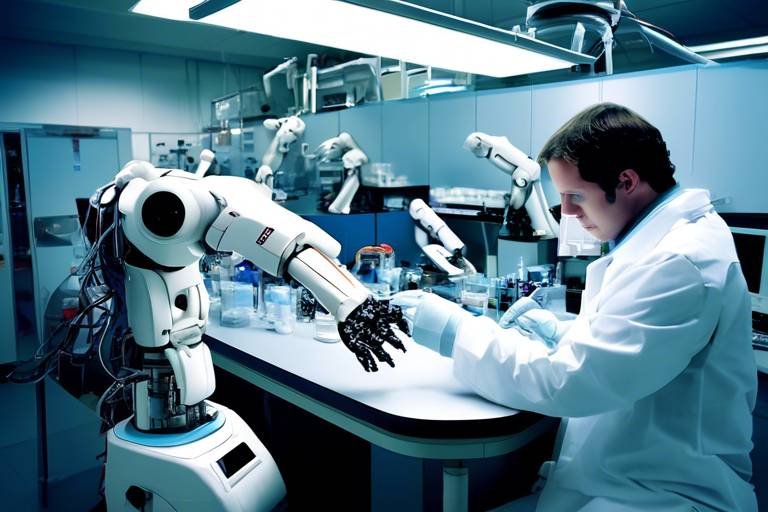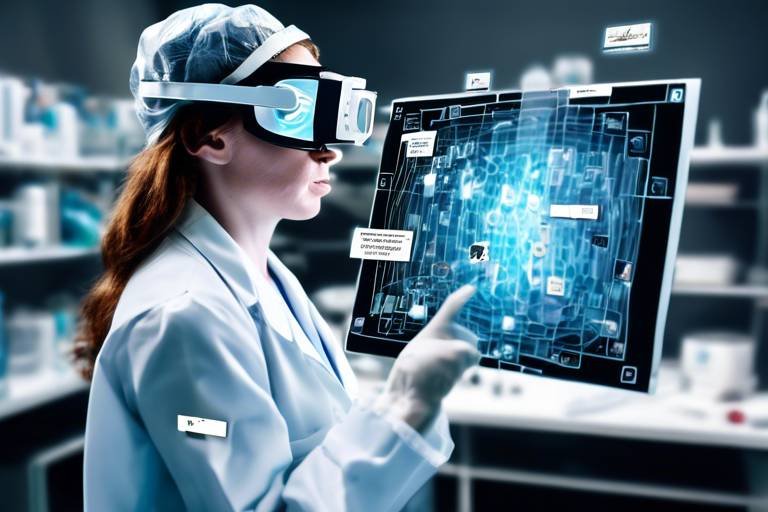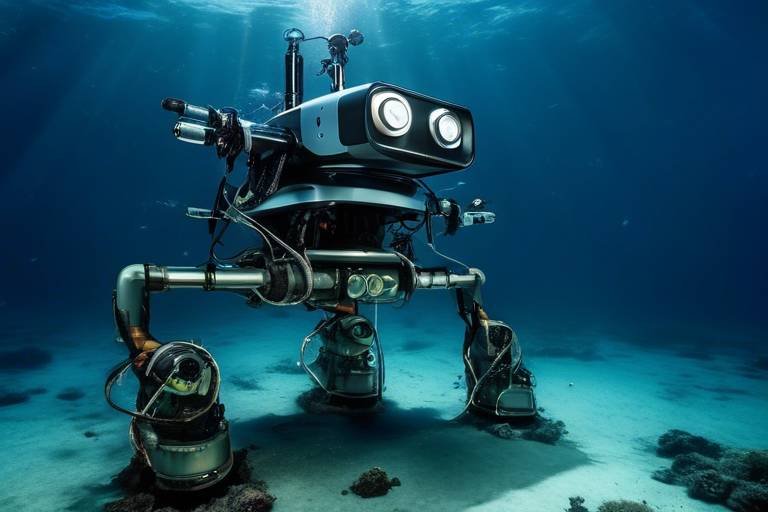How Technology is Shaping the Future of Science Education
In today's fast-paced world, technology is revolutionizing every aspect of our lives, and education is no exception. The landscape of science education is undergoing a profound transformation, driven by innovative tools and methods that are reshaping how students learn and engage with scientific concepts. Gone are the days when education was confined to dusty textbooks and rigid classroom settings. Now, students are harnessing the power of technology to explore, experiment, and enhance their understanding of science like never before. Imagine a classroom where students can conduct virtual experiments, interact with 3D models of the solar system, or collaborate with peers across the globe—all from their own devices. This article delves into the exciting ways technology is influencing science education, preparing students for the challenges of the future.
Digital tools are at the forefront of this educational revolution, providing immersive learning experiences that foster deeper understanding and engagement among students. These tools range from interactive simulations to sophisticated software that allows students to visualize complex scientific phenomena. For instance, platforms like PhET Interactive Simulations offer students the ability to manipulate variables and observe outcomes in real-time, making abstract concepts tangible. By incorporating these digital resources, educators can create a dynamic learning environment that caters to various learning styles. The result? Students are not just passive recipients of information; they are active participants in their learning journey.
The rise of online learning platforms has made science education more accessible than ever before. Students from diverse backgrounds can now engage with high-quality resources and expert instruction, regardless of their geographical location. This democratization of education means that a student in a rural area can access the same resources as one in a bustling city. Platforms like Khan Academy and Coursera offer a wealth of science courses, enabling learners to study at their own pace and convenience. This flexibility not only enhances learning but also empowers students to take charge of their education.
One of the most exciting developments in science education is the advent of virtual labs. These platforms allow students to conduct experiments in a safe, controlled environment, offering opportunities to explore scientific concepts without the limitations of physical lab resources. Imagine being able to mix chemicals, observe reactions, and analyze results—all without the risk of spills or accidents. Virtual labs not only provide a safe space for experimentation but also encourage students to engage in hands-on learning experiences that promote critical thinking and problem-solving skills.
Remote experimentation offers numerous benefits that traditional laboratory settings often cannot match. Students can conduct experiments at any time, eliminating the logistical challenges associated with coordinating lab schedules. Furthermore, they can repeat experiments as many times as needed to fully understand the concepts at play. This kind of flexibility is crucial in developing a robust scientific mindset. Additionally, remote labs can provide instant feedback, allowing students to learn from their mistakes and adjust their approaches in real-time.
However, it’s essential to acknowledge that virtual labs do have limitations. While they provide a wealth of information and opportunities for experimentation, they may lack the tactile experience of real experiments. The hands-on manipulation of materials is crucial for developing practical skills necessary for future scientific endeavors. Students might miss out on the sensory experiences that come with traditional labs, such as the smell of chemicals or the feel of different materials. Balancing virtual and physical experimentation is key to a comprehensive science education.
Another innovative approach in science education is gamification. By incorporating game-like elements into learning, educators can enhance motivation and engagement among students. Imagine a classroom where students earn points for completing experiments, unlock levels for mastering concepts, and collaborate with classmates in friendly competitions. This approach transforms learning into an adventure, making complex scientific principles more relatable and enjoyable. Gamification not only captivates students' attention but also fosters a sense of achievement and encourages them to explore further.
As technology continues to evolve, so does its role in education. Data analytics has emerged as a powerful tool for assessing student performance and learning patterns. By analyzing data, educators can gain insights into how students are progressing, identifying strengths and weaknesses in their understanding of scientific concepts. This information enables personalized instruction, allowing teachers to tailor their approaches to meet the unique needs of each student.
With data analytics tools, teachers can monitor student progress in real-time. This capability allows for timely feedback and adjustments to instructional strategies based on individual needs. For example, if a student struggles with a particular concept, teachers can provide additional resources or one-on-one support to reinforce understanding. This proactive approach ensures that no student is left behind, fostering a culture of continuous improvement and success.
Moreover, data analytics can help identify learning gaps among students. By analyzing performance metrics, educators can pinpoint areas where students may be struggling and facilitate tailored support and resources. This targeted approach ensures that all learners achieve their potential in science education, regardless of their starting point. With the right support, every student can thrive in the world of science.
As we look ahead, augmented reality (AR) and virtual reality (VR) technologies promise to further enhance science education. These immersive experiences allow students to explore complex concepts in a visually engaging manner. Imagine a student putting on VR goggles and stepping inside a human cell, witnessing cellular processes in action. Such experiences can foster a deeper understanding of scientific principles and ignite a passion for exploration.
AR and VR applications in science education enable students to visualize intricate processes, such as cellular functions or astronomical phenomena. These technologies can bring abstract concepts to life, making them more accessible and relatable. By engaging multiple senses, students are likely to retain information better and develop a genuine interest in scientific inquiry.
However, while AR and VR offer exciting opportunities, challenges such as cost, accessibility, and the need for teacher training must be addressed. Not every school has the budget to implement these technologies, and teachers need proper training to maximize their potential. Overcoming these hurdles is essential to fully integrate AR and VR into science curricula and ensure that all students can benefit from these groundbreaking tools.
- How is technology improving science education?
Technology enhances science education by providing interactive tools, virtual labs, and online resources that engage students and facilitate personalized learning. - What are the benefits of virtual labs?
Virtual labs allow students to conduct experiments safely, anytime, and anywhere, promoting hands-on learning and critical thinking. - Are there drawbacks to using digital tools in science education?
While digital tools offer many advantages, they may lack the tactile experience of physical experiments, which is crucial for developing practical skills. - How does gamification impact student learning?
Gamification increases motivation and engagement by making learning fun and interactive, encouraging students to explore and master scientific concepts.

The Role of Digital Tools in Science Learning
In today's fast-paced world, the integration of digital tools into science education has become not just beneficial, but essential. These tools have transformed the traditional classroom into an interactive, engaging environment that captivates students' attention and enhances their understanding of complex scientific concepts. Imagine walking into a classroom where students are not just passive listeners but active participants, exploring the intricacies of physics or biology through immersive simulations and interactive software. This shift is not merely a trend; it represents a fundamental change in how we approach science education.
One of the most significant advantages of digital tools is their ability to provide real-time feedback. For instance, when students engage with simulations that mimic real-world scientific processes, they can see the immediate effects of their actions. This instant feedback loop allows learners to make adjustments and deepen their understanding in a way that traditional methods simply cannot match. Furthermore, these digital platforms often include visual aids, which cater to various learning styles and help clarify abstract concepts. By utilizing animations and interactive diagrams, students can visualize processes like photosynthesis or chemical reactions, making the learning experience far more engaging.
Another critical aspect is the collaborative opportunities that digital tools provide. With the rise of online platforms, students can collaborate with peers from around the globe, exchanging ideas and insights that enrich their learning experience. This collaboration fosters a sense of community and encourages students to work together to solve complex problems, mirroring the collaborative nature of scientific research in the real world.
Moreover, digital tools can be tailored to meet the diverse needs of students. Teachers can customize learning experiences based on individual student progress, ensuring that each learner receives the support they need. For example, platforms that track student performance can highlight areas where a student may be struggling, allowing educators to intervene with targeted resources and personalized instruction. This level of customization is a game-changer, as it helps ensure that no student is left behind.
However, while the benefits of digital tools are undeniable, they also come with challenges. Not all students have equal access to technology, which can create disparities in learning opportunities. Additionally, educators must be adequately trained to utilize these tools effectively, ensuring that they can integrate them into their teaching strategies without overwhelming their students. Addressing these challenges is crucial for maximizing the potential of digital tools in science education.
In conclusion, the role of digital tools in science learning is pivotal. They not only enhance the educational experience but also prepare students for a future where technology will play an even more significant role in scientific discovery and innovation. As we continue to explore new ways to integrate these tools into the classroom, we must remain vigilant in addressing the challenges they present, ensuring that every student has the opportunity to thrive in this digital age.
- What types of digital tools are most effective in science education?
Digital simulations, interactive software, and online collaborative platforms are among the most effective tools, as they promote engagement and real-time feedback.
- How can teachers ensure all students have access to digital tools?
Schools can provide resources such as loaner devices and internet access programs, and educators can utilize tools that are accessible on multiple platforms.
- What training do teachers need to effectively use digital tools?
Professional development workshops focusing on technology integration and hands-on training with specific tools can help teachers feel more comfortable and effective.

Online Learning Platforms and Accessibility
In today's fast-paced world, online learning platforms have become a game-changer in the realm of science education. They serve as a bridge, connecting students from various backgrounds with high-quality educational resources and expert instruction. Imagine a student living in a remote area, where access to a traditional classroom is limited. With just a laptop and an internet connection, they can dive into the fascinating world of science, exploring everything from biology to physics at their own pace. This newfound accessibility is not just a luxury; it’s a necessity in a world where education is evolving.
One of the most significant advantages of these platforms is their ability to offer a diverse range of resources. Students can engage with interactive simulations, watch instructional videos, and participate in virtual discussions. This multifaceted approach caters to different learning styles, ensuring that every student can find a method that resonates with them. For instance, visual learners can benefit from video tutorials, while kinesthetic learners can engage with interactive labs. The flexibility of online platforms allows learners to tailor their educational experiences, making science education not only more effective but also more enjoyable.
Moreover, online learning platforms often provide a wealth of resources that may not be available in traditional classrooms. From cutting-edge research articles to virtual field trips, these tools expand the horizons of what students can learn. For example, a student studying astronomy can explore the latest discoveries in real-time, gaining insights that would typically be reserved for graduate-level courses. This democratization of knowledge empowers students and ignites their passion for science.
However, it’s essential to acknowledge that while online learning platforms enhance accessibility, they also come with their own set of challenges. Not all students have equal access to technology or reliable internet connections, which can create disparities in learning opportunities. To address this, educators and policymakers must work together to ensure that all students, regardless of their socioeconomic status, can benefit from these advancements. Solutions might include providing subsidized internet access or distributing devices to underprivileged students.
In conclusion, online learning platforms are reshaping science education by making it more accessible and engaging. They empower students to take charge of their learning, explore new concepts, and connect with experts in the field. As we move forward, it's crucial to strive for inclusivity, ensuring that every student has the opportunity to experience the wonders of science, no matter where they are.
- What are online learning platforms?
Online learning platforms are digital environments that provide educational resources, courses, and interactive tools for students to learn from anywhere. - How do online platforms enhance accessibility?
They eliminate geographical barriers, allowing students from diverse backgrounds to access high-quality educational content and expert instruction. - What types of resources can I find on these platforms?
Resources include interactive simulations, video tutorials, research articles, and virtual labs, catering to various learning styles. - Are there any disadvantages to online learning?
Yes, challenges include unequal access to technology and the internet, which can hinder some students' learning experiences.

Virtual Labs and Experiments
In recent years, the concept of virtual labs has emerged as a groundbreaking innovation in science education. These digital platforms allow students to conduct experiments in a safe and controlled environment, simulating real-world scientific processes without the constraints of traditional laboratory setups. Imagine being able to mix chemicals, observe reactions, or even explore the depths of the ocean—all from the comfort of your home or classroom. This level of accessibility not only enhances learning but also democratizes education, enabling students from diverse backgrounds to engage with scientific concepts.
One of the most significant advantages of virtual labs is the ability to conduct experiments that may be too dangerous, costly, or logistically challenging in a physical lab. For instance, students can explore complex biochemical reactions or perform physics experiments involving high voltages without the risk of accidents. This hands-on approach fosters a deeper understanding of scientific principles, as students can manipulate variables and observe outcomes in real-time.
Moreover, virtual labs often come equipped with interactive features that enhance the learning experience. Students can access a variety of resources, such as video tutorials, step-by-step guides, and instant feedback mechanisms. These elements not only make learning more engaging but also allow for a personalized educational experience. For example, if a student struggles with a particular concept, they can revisit the relevant section of the virtual lab or seek additional resources tailored to their needs.
However, it's essential to acknowledge some limitations associated with virtual labs. While they provide a wealth of information and opportunities for experimentation, they may lack the tactile experience that comes with handling real lab equipment. This could hinder the development of practical skills that are crucial for future scientific endeavors. Students may find themselves well-versed in theoretical knowledge but lacking the hands-on experience that traditional labs provide.
To illustrate the impact of virtual labs, consider the following table that compares traditional labs with virtual labs:
| Feature | Traditional Labs | Virtual Labs |
|---|---|---|
| Cost | High (equipment, materials) | Lower (subscription fees, software) |
| Safety | Potential hazards (chemicals, equipment) | Safe (controlled environment) |
| Accessibility | Location-dependent | Global access (internet required) |
| Hands-on Experience | Real equipment and materials | Simulated environments |
In conclusion, virtual labs and experiments are transforming the landscape of science education. They offer exciting opportunities for students to engage with scientific concepts in a manner that is both interactive and accessible. As technology continues to evolve, the integration of virtual labs into science curricula will undoubtedly play a pivotal role in shaping the future of education.
- What are virtual labs? Virtual labs are digital platforms that simulate real-world scientific experiments, allowing students to conduct experiments in a safe and controlled environment.
- How do virtual labs enhance learning? They provide immersive experiences, instant feedback, and access to a variety of resources, making science education more engaging and personalized.
- Are there any limitations to virtual labs? Yes, while they offer many benefits, they may lack the tactile experience of real experiments, which is essential for developing practical skills.
- How can students access virtual labs? Students can access virtual labs through online platforms, often requiring a subscription or institutional access.
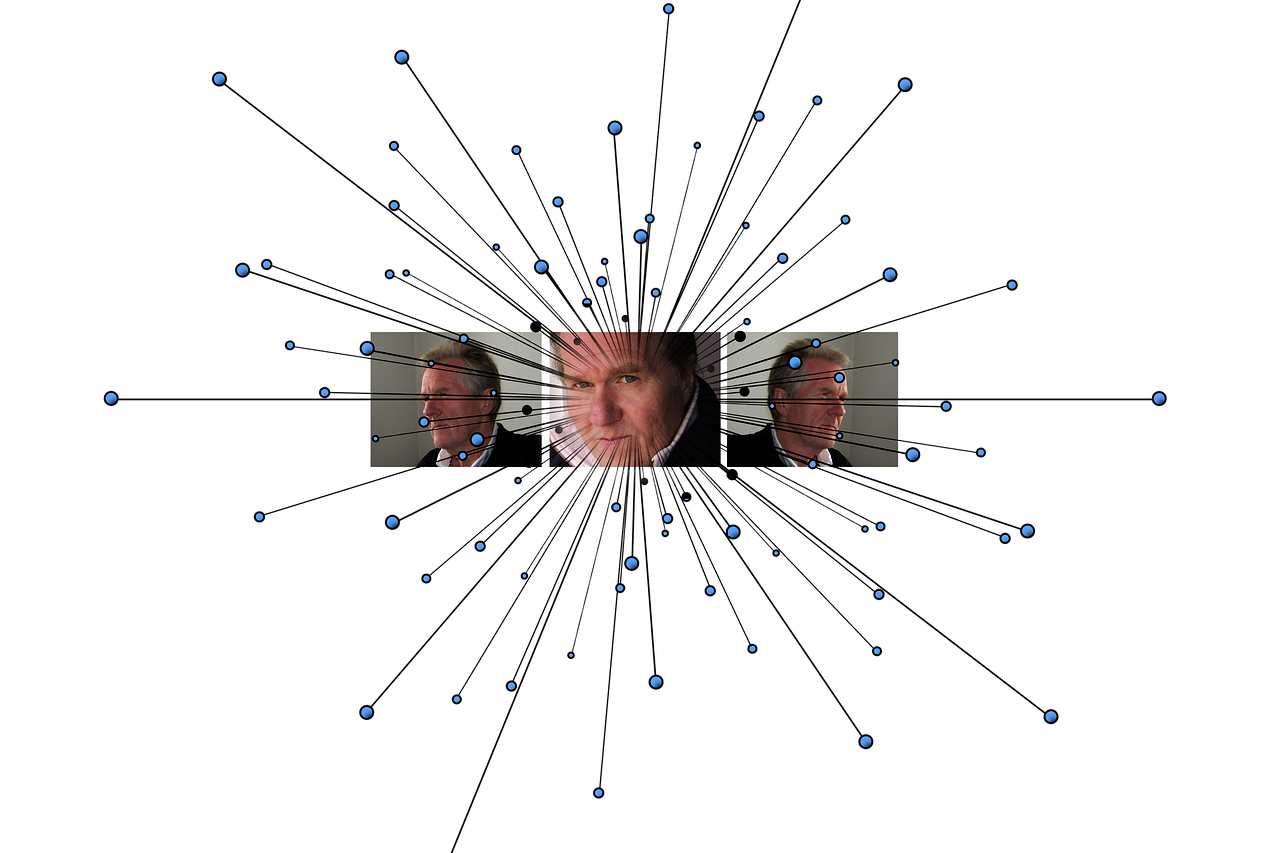
Benefits of Remote Experimentation
Remote experimentation has emerged as a groundbreaking approach in science education, offering a plethora of benefits that traditional laboratory settings simply cannot match. Imagine being able to conduct a complex chemistry experiment from the comfort of your home, without the risk of spills or accidents! This innovative method not only enhances safety but also provides students with the freedom to explore scientific concepts at their own pace. One of the most significant advantages is the ability to conduct experiments that would otherwise be impossible due to logistical constraints, such as limited access to physical lab equipment or materials.
Moreover, remote experimentation promotes critical thinking and problem-solving skills. As students engage with various virtual experiments, they are required to analyze data, make predictions, and interpret results, all of which are crucial skills in the scientific method. This hands-on approach, albeit virtual, fosters a deeper understanding of the subject matter, allowing learners to grasp complex concepts more effectively. For instance, when students simulate a physics experiment involving motion, they can manipulate variables in real-time, observing the effects instantaneously, which enhances their learning experience.
Another remarkable benefit of remote experimentation is its accessibility. Students from diverse backgrounds, including those in rural areas or underfunded schools, can access high-quality scientific resources and simulations. This democratization of education ensures that all students, regardless of their geographical location, have the opportunity to engage in meaningful scientific inquiry. Furthermore, remote labs can be accessed at any time, allowing students to revisit experiments and reinforce their learning whenever they choose.
Additionally, remote experimentation can significantly reduce the costs associated with traditional lab setups. Schools often face budget constraints that limit their ability to purchase necessary equipment and supplies. With virtual labs, the financial burden is alleviated, enabling educational institutions to allocate resources more effectively. This not only benefits the schools but also allows for a broader range of experiments to be explored, enriching the overall educational experience.
In conclusion, the benefits of remote experimentation are multifaceted. From promoting critical thinking and accessibility to reducing costs and enhancing safety, this innovative approach to science education is paving the way for a more inclusive and effective learning environment. As technology continues to evolve, the potential for remote experimentation to transform science education is boundless, inspiring the next generation of scientists and thinkers.
- What is remote experimentation?
Remote experimentation refers to conducting scientific experiments using virtual labs and simulations, allowing students to engage in hands-on learning without being physically present in a traditional laboratory. - How does remote experimentation enhance learning?
It promotes critical thinking, problem-solving skills, and provides access to a wider range of experiments, making science education more engaging and effective. - Are there any limitations to remote experimentation?
While it offers numerous benefits, it may lack the tactile experience of real experiments, which can be important for developing practical skills. - Can remote experimentation be accessed by students everywhere?
Yes, remote experimentation is designed to be accessible to students regardless of their geographical location, making science education more inclusive.

Limitations of Virtual Labs
While virtual labs have undeniably transformed the landscape of science education, providing students with unprecedented access to experiments and simulations, they are not without their limitations. One of the most significant drawbacks is the absence of hands-on experience. In traditional labs, students engage with real materials, tools, and equipment, developing vital practical skills that are essential for scientific inquiry. Virtual labs, on the other hand, often rely on digital representations, which may not fully replicate the tactile sensations and nuances involved in actual experiments.
Moreover, the learning curve associated with navigating virtual lab software can also be a barrier. Not all students are tech-savvy, and for some, the transition from physical to virtual experimentation can be daunting. This can lead to frustration and disengagement, ultimately impacting their learning outcomes. Additionally, the reliance on technology means that any technical issues—such as software bugs or connectivity problems—can disrupt the learning process, leaving students unable to complete their experiments or access important resources.
Another critical aspect to consider is the contextual understanding of scientific concepts. While virtual labs can simulate a wide range of experiments, they may not provide the same depth of context that comes from conducting real-world experiments. For instance, students might miss out on the unexpected variables that can arise in a physical lab setting, which are crucial for developing critical thinking and problem-solving skills. The unpredictability of real experiments often leads to deeper learning, as students must adapt and respond to unforeseen challenges.
Finally, there is the issue of accessibility. Not all students have equal access to the technology required for virtual labs. Factors such as socioeconomic status, geographical location, and school resources can create disparities in who can fully benefit from these innovative educational tools. While virtual labs aim to democratize science education, the reality is that they may inadvertently widen the gap between those with and without access to the necessary technology.
In summary, while virtual labs provide exciting opportunities for science education, it is essential to acknowledge their limitations. Educators must strive to find a balance between virtual and traditional methods, ensuring that students receive a comprehensive education that equips them with both theoretical knowledge and practical skills.
- What are virtual labs?
Virtual labs are digital platforms that allow students to conduct experiments and simulations online, providing a safe and controlled environment for learning.
- How do virtual labs benefit students?
They offer flexibility, accessibility, and the ability to conduct experiments that may not be feasible in a physical lab due to safety or resource constraints.
- What are the main challenges of using virtual labs?
Some challenges include the lack of hands-on experience, potential technical issues, and disparities in access to technology.
- Can virtual labs replace traditional labs?
While they offer valuable learning experiences, they should complement rather than replace traditional labs to provide a well-rounded education.

Gamification in Science Education
Imagine walking into a classroom where learning feels less like a chore and more like an exciting adventure. Gamification in science education is making this dream a reality by integrating game-like elements into the learning process. This innovative approach not only boosts student engagement but also enhances motivation, making complex scientific concepts more digestible and enjoyable. By turning lessons into interactive quests, students are encouraged to explore, experiment, and discover at their own pace.
At its core, gamification taps into the natural human love for competition and rewards. Think of it as transforming a traditional science lesson into a thrilling game where students earn points, unlock achievements, and even compete against their peers. For instance, platforms like Kahoot! and Quizizz allow educators to create fun quizzes that can be played in real-time, turning assessment into an engaging activity that students look forward to. This not only helps in reinforcing knowledge but also fosters a sense of community within the classroom.
One of the most powerful aspects of gamification is its ability to cater to different learning styles. Whether a student thrives on visual stimuli, enjoys hands-on activities, or prefers auditory instructions, gamified learning environments can be tailored to meet these diverse needs. For example, a science game might involve solving puzzles related to chemical reactions, where students must use their knowledge to progress through levels. This multifaceted approach not only makes learning more inclusive but also promotes critical thinking and problem-solving skills.
However, it's essential to strike a balance when implementing gamification in science education. While the excitement of games can significantly enhance learning experiences, educators must ensure that the core educational objectives remain at the forefront. Gamification should not replace traditional teaching methods but rather complement them, providing a holistic approach to science education. A well-structured gamified lesson plan might include:
- Clear Learning Objectives: Ensure that each game or activity aligns with the curriculum.
- Feedback Mechanisms: Provide students with immediate feedback to help them understand their mistakes and learn from them.
- Collaboration Opportunities: Encourage teamwork and collaboration through group challenges and projects.
As we look to the future, the potential for gamification in science education seems limitless. With advancements in technology, we can expect to see even more interactive and immersive experiences, such as virtual reality simulations that allow students to conduct virtual experiments. This evolution not only makes learning fun but also prepares students for a world where scientific literacy is crucial.
Q1: What is gamification in science education?
Gamification in science education involves incorporating game-design elements into the learning process to enhance student engagement and motivation.
Q2: How does gamification benefit students?
It makes learning more interactive and enjoyable, encourages exploration, and caters to various learning styles, promoting critical thinking and problem-solving skills.
Q3: Can gamification replace traditional teaching methods?
No, gamification should complement traditional methods, ensuring that educational objectives are still met while providing a more engaging learning experience.
Q4: What tools can be used for gamification in science education?
Platforms like Kahoot!, Quizizz, and various virtual reality tools can be effectively used to gamify science lessons.

Data Analytics in Education
In the ever-evolving landscape of education, data analytics has emerged as a game-changer, particularly in the realm of science education. By leveraging vast amounts of data collected from various learning activities, educators can gain invaluable insights into student performance and engagement. This analytical approach allows teachers to tailor their instruction to meet the unique needs of each student, transforming the educational experience into something far more personalized and effective.
Imagine walking into a classroom where every student's learning style and pace is understood and addressed. With data analytics, this vision is becoming a reality. Educators are now equipped with tools that analyze student interactions, assessments, and even participation in discussions. This information can be used to identify trends, strengths, and areas that require improvement. It’s like having a personal tutor for each student, ensuring that no one gets left behind.
One of the most significant advantages of data analytics in education is its ability to track student progress in real-time. Teachers can monitor how well students grasp scientific concepts, allowing for timely feedback and adjustments to instructional strategies. For instance, if a group of students struggles with a particular topic, educators can pivot their approach, providing additional resources or alternative explanations to bridge the gap. This dynamic responsiveness is crucial in science education, where concepts often build on one another.
Additionally, data analytics can help identify learning gaps among students. By examining patterns in assessment results, educators can pinpoint specific areas where students may be struggling. This targeted approach ensures that all learners receive the support they need to achieve their potential. For example, if data shows that students are consistently underperforming in a particular area of physics, teachers can implement focused interventions, such as additional tutoring sessions or specialized workshops.
| Benefits of Data Analytics in Education | Description |
|---|---|
| Personalized Learning | Tailors instruction to meet individual student needs. |
| Real-Time Monitoring | Allows teachers to track student progress and adjust strategies promptly. |
| Identifying Learning Gaps | Facilitates targeted interventions to help struggling students. |
| Enhanced Engagement | Promotes greater student involvement through tailored learning experiences. |
Furthermore, the integration of data analytics fosters a culture of continuous improvement. Educators can analyze the effectiveness of their teaching methods and curricula based on student outcomes. This feedback loop is essential for refining educational practices and ensuring that science education remains relevant and impactful. By embracing data-driven decision-making, schools can elevate their educational standards and better prepare students for the challenges of the future.
However, it’s crucial to recognize that data analytics is not without its challenges. Issues such as data privacy, the need for proper training, and the potential for misinterpretation of data can hinder its effectiveness. Schools must ensure that they have robust systems in place to protect student information while also providing educators with the necessary tools and training to interpret data accurately.
In conclusion, data analytics in education is revolutionizing the way we approach science teaching and learning. By providing insights into student performance and learning patterns, it enables educators to create a more personalized, engaging, and effective educational experience. As technology continues to advance, the potential for data analytics to transform education is boundless, paving the way for future generations to thrive in the world of science.
- What is data analytics in education? Data analytics in education refers to the systematic analysis of data related to student performance, engagement, and learning patterns to improve educational outcomes.
- How can data analytics improve science education? It allows educators to tailor instruction to individual student needs, track progress in real-time, and identify learning gaps, leading to more effective teaching strategies.
- What are the challenges of implementing data analytics in schools? Challenges include data privacy concerns, the need for proper training for educators, and potential misinterpretation of data.
- Is data analytics beneficial for all subjects? Yes, while this article focuses on science education, data analytics can be applied across various subjects to enhance learning experiences.

Tracking Student Progress
In the ever-evolving landscape of science education, has become a pivotal aspect of fostering effective learning environments. Educators are no longer relying solely on traditional assessments; instead, they are leveraging advanced data analytics tools to gain deeper insights into student performance. This shift allows teachers to monitor not just the grades but also the learning patterns and engagement levels of their students.
Imagine a classroom where teachers can instantly see how well each student is grasping complex scientific concepts. With the right analytics tools, this is not just a dream but a reality. These tools provide real-time data, enabling educators to identify trends and make informed decisions. For instance, if a significant number of students struggle with a particular topic, teachers can adjust their instructional strategies, providing additional resources or personalized support to address those gaps.
Furthermore, tracking progress through data analytics can help in identifying individual learning needs. Each student has a unique learning style, and by analyzing their interactions with learning materials, teachers can tailor their approaches. This personalized instruction ensures that every student, regardless of their starting point, has the opportunity to excel in science education.
To illustrate the impact of tracking student progress, consider the following table that highlights key benefits of using data analytics in the classroom:
| Benefit | Description |
|---|---|
| Real-Time Feedback | Teachers can provide immediate feedback to students, helping them understand their mistakes and learn from them. |
| Customized Learning Plans | Data analytics allows for the creation of tailored learning plans that cater to individual student needs. |
| Enhanced Engagement | By understanding student progress, teachers can implement strategies that boost engagement and motivation. |
| Identifying At-Risk Students | Analytics can highlight students who may be falling behind, allowing for timely interventions. |
In conclusion, tracking student progress through data analytics not only enhances the educational experience but also empowers teachers to create a more effective and inclusive learning environment. As we continue to embrace technology in education, the ability to monitor and respond to student needs will be crucial in preparing the next generation of scientists.
- What tools are commonly used to track student progress? Many schools utilize platforms such as Google Classroom, Edmodo, and specialized analytics software that provide insights into student performance.
- How does tracking progress benefit students? It allows for personalized learning experiences, ensuring students receive the support they need to succeed.
- Can tracking student progress help with curriculum development? Absolutely! By analyzing data, educators can refine and adapt curricula to better meet the needs of their students.

Identifying Learning Gaps
In today's fast-paced educational landscape, is crucial for ensuring that every student reaches their potential, particularly in the field of science education. With the integration of data analytics, educators can pinpoint specific areas where students struggle, allowing for a more tailored approach to instruction. Think of it like a GPS for learning: just as a GPS helps you navigate the best route to your destination, data analytics helps educators navigate the best pathways for student success.
By analyzing performance data, teachers can uncover patterns that reveal where students are excelling and where they may be falling behind. For instance, if a significant number of students are struggling with a particular concept, such as photosynthesis or Newton's laws of motion, this could indicate a need for additional resources or a change in teaching strategy. This approach ensures that no student is left behind, fostering an inclusive learning environment.
Moreover, data analytics can help educators assess not just academic performance, but also engagement levels. By tracking metrics such as participation in virtual labs or completion rates of online assignments, teachers can gain insights into which students may need extra support. This is particularly important in science education, where hands-on experiments and interactive learning play a vital role in comprehension.
To illustrate how learning gaps can be identified, consider the following table that summarizes common indicators of learning gaps:
| Indicator | Description |
|---|---|
| Low Test Scores | Consistently poor performance on assessments may indicate a lack of understanding of the material. |
| High Drop-off Rates | A noticeable decline in participation during lessons or assignments can signal disengagement or confusion. |
| Frequent Misunderstandings | Repeated errors on similar types of questions highlight specific areas that require further instruction. |
| Feedback from Students | Direct communication from students about their struggles can provide valuable insights into learning gaps. |
Identifying these gaps is just the first step. Once they are recognized, educators can implement targeted interventions, such as personalized tutoring, additional resources, or even collaborative projects that encourage peer learning. This proactive approach not only helps students catch up but also fosters a culture of continuous improvement and resilience.
In conclusion, leveraging data analytics to identify learning gaps is a game changer in science education. By understanding where students struggle, educators can provide the support needed to help them thrive, ensuring that each learner is equipped with the knowledge and skills necessary for future success.
- What are learning gaps? Learning gaps refer to the disparities between what students are expected to know and what they actually understand.
- How can data analytics help in identifying learning gaps? Data analytics can track student performance and engagement, highlighting areas where students may need additional support.
- What interventions can be implemented once learning gaps are identified? Interventions can include personalized tutoring, additional resources, or collaborative projects to enhance understanding.
- Why is it important to address learning gaps in science education? Addressing learning gaps ensures that all students have a solid foundation in scientific principles, which is essential for their future academic and career success.

The Future of Augmented and Virtual Reality
As we leap into the future, augmented reality (AR) and virtual reality (VR) technologies are not just buzzwords; they are set to revolutionize the landscape of science education. Imagine stepping into a classroom where the walls dissolve, and you find yourself exploring the depths of the ocean or walking on the surface of Mars. This is not science fiction—it's a glimpse into the future of learning. These technologies create immersive environments that allow students to visualize complex scientific concepts in a way that traditional methods simply cannot match.
One of the most exciting aspects of AR and VR in science education is their ability to transform abstract ideas into tangible experiences. For instance, students can don a VR headset and observe the intricate processes of cellular division or manipulate the forces of physics in a simulated environment. This hands-on experience fosters a deeper understanding of scientific principles, enhancing retention and engagement. Furthermore, the interactive nature of these technologies encourages students to ask questions, explore hypotheses, and experiment in ways that traditional textbooks cannot.
However, the implementation of AR and VR in education is not without its challenges. A significant barrier is the cost associated with acquiring the necessary hardware and software. Many schools, especially those in underfunded districts, may struggle to provide these advanced learning tools. Additionally, teachers need proper training to effectively integrate these technologies into their curricula. Without adequate support, the potential of AR and VR may remain untapped.
Despite these hurdles, the potential benefits are too significant to overlook. As technology continues to advance, we can expect to see more affordable AR and VR solutions that are accessible to a wider range of educational institutions. Furthermore, as educators become more familiar with these tools, innovative teaching methods will emerge, making science education not just informative but also exciting and engaging.
In conclusion, the future of augmented and virtual reality in science education is bright and full of potential. As we embrace these technologies, we open the door to new ways of learning that can inspire the next generation of scientists, thinkers, and innovators. The classroom of tomorrow may very well be a place where the boundaries of reality are stretched, allowing students to explore the universe in ways we can only dream of today.
- What is the difference between augmented reality and virtual reality?
Augmented reality overlays digital information onto the real world, while virtual reality immerses users in a completely digital environment. - How can AR and VR improve science education?
These technologies provide interactive and immersive experiences that enhance understanding and retention of complex scientific concepts. - What are the challenges of implementing AR and VR in schools?
Challenges include high costs, the need for teacher training, and ensuring equitable access to technology for all students.

Applications in Science Education
This article explores the transformative impact of technology on science education, highlighting innovative tools, methods, and trends that enhance learning experiences and prepare students for future challenges.
Digital tools, such as simulations and interactive software, have revolutionized science education by providing immersive learning experiences that foster deeper understanding and engagement among students.
Online learning platforms have made science education more accessible, allowing students from diverse backgrounds to engage with high-quality resources and expert instruction, regardless of their geographical location.
Virtual labs enable students to conduct experiments in a safe, controlled environment, offering opportunities to explore scientific concepts without the limitations of physical lab resources.
Remote experimentation allows students to engage in hands-on learning experiences, promoting critical thinking and problem-solving skills while eliminating logistical challenges associated with traditional laboratory settings.
Despite their advantages, virtual labs may lack the tactile experience of real experiments, potentially hindering the development of practical skills necessary for future scientific endeavors.
Gamification incorporates game-like elements into science education, enhancing motivation and engagement by making learning more interactive and enjoyable for students.
Data analytics in education helps educators assess student performance and learning patterns, enabling personalized instruction and targeted interventions to improve science education outcomes.
By utilizing data analytics tools, teachers can monitor student progress in real-time, allowing for timely feedback and adjustments to instructional strategies based on individual needs.
Data analytics can help identify learning gaps among students, facilitating tailored support and resources to ensure all learners achieve their potential in science education.
Augmented and virtual reality technologies promise to further enhance science education by providing immersive experiences that allow students to explore complex concepts in a visually engaging manner.
Augmented Reality (AR) and Virtual Reality (VR) are not just buzzwords; they are becoming integral parts of the science education landscape. Imagine walking through a 3D model of the solar system or observing the intricate details of a cell's structure from all angles. These technologies provide students with the ability to visualize and interact with scientific concepts in ways that traditional methods simply cannot match.
For instance, AR can overlay digital information onto the real world, allowing students to see chemical reactions in action or to explore the anatomy of a human body in a classroom setting. On the other hand, VR immerses students in an entirely virtual environment where they can conduct experiments, explore ecosystems, or even travel through time to witness historical scientific events.
Consider the following applications:
- Interactive Simulations: Students can manipulate variables in a controlled environment, such as adjusting temperature or pressure in a chemical reaction, to see the outcomes in real-time.
- Field Trips: Virtual field trips to places like the Amazon rainforest or the surface of Mars can be conducted without leaving the classroom.
- Complex Concepts Visualization: Difficult subjects, such as quantum physics, can be made comprehensible through engaging visual aids and interactive experiences.
These applications not only make learning more engaging but also help students develop a deeper understanding of the material. However, it’s essential to recognize that while AR and VR offer exciting opportunities, they also come with challenges such as cost and the need for teacher training. Addressing these challenges will be crucial for the successful integration of these technologies into science curricula.
Q: How can AR and VR enhance science learning?
A: AR and VR provide immersive experiences that allow students to visualize and interact with complex scientific concepts, making learning more engaging and effective.
Q: Are there any drawbacks to using virtual labs?
A: While virtual labs offer many advantages, they may lack the tactile experience of real experiments, which can hinder the development of practical skills.
Q: How can data analytics improve science education?
A: Data analytics helps educators track student progress and identify learning gaps, allowing for personalized instruction and targeted interventions.
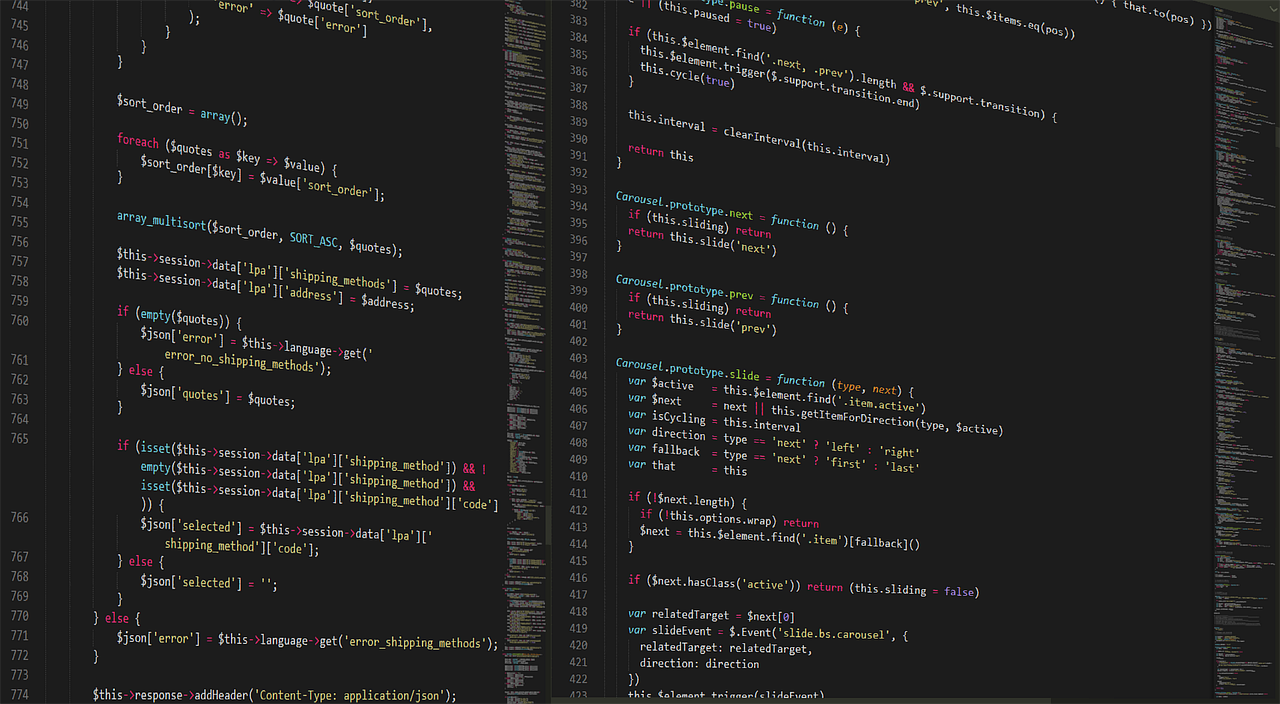
Challenges of Implementing AR and VR
While augmented reality (AR) and virtual reality (VR) technologies hold immense promise for revolutionizing science education, several challenges must be addressed to fully harness their potential. First and foremost is the cost associated with acquiring the necessary hardware and software. High-quality VR headsets and AR devices can be quite expensive, which may pose a significant barrier for many educational institutions, especially those with limited budgets. Schools may find it challenging to justify these investments when traditional teaching methods are already in place.
Another critical challenge is accessibility. Not all students have equal access to the technology required for AR and VR experiences. This digital divide can exacerbate existing inequalities in education, leaving some students behind while others benefit from these advanced learning tools. Additionally, the infrastructure needed to support AR and VR applications, such as high-speed internet and adequate power supply, may not be available in all regions.
Furthermore, there is a pressing need for teacher training. Educators must be equipped with the skills and knowledge to effectively integrate AR and VR into their teaching practices. Without proper training, teachers may struggle to incorporate these technologies into their lessons, limiting their effectiveness. Professional development programs focused on AR and VR are essential for ensuring that educators can confidently use these tools to enhance learning outcomes.
Moreover, content availability is another hurdle. While there are many AR and VR applications available, not all of them are relevant to the science curriculum. Developing high-quality, curriculum-aligned content requires significant time and resources, which can be a daunting task for educators and institutions alike. Collaboration between educators, developers, and content creators is crucial to produce engaging and effective educational materials.
Lastly, we must consider the potential for overstimulation. While immersive experiences can enhance learning, they can also overwhelm students if not implemented thoughtfully. Striking the right balance between traditional teaching methods and immersive technology is essential to avoid cognitive overload and ensure that students can absorb and retain information effectively.
In summary, while AR and VR technologies present exciting opportunities for enhancing science education, addressing the challenges of cost, accessibility, teacher training, content availability, and potential overstimulation is vital for successful implementation. By tackling these issues head-on, we can pave the way for a more inclusive and effective educational landscape that leverages the power of technology.
- What are AR and VR in education? AR (Augmented Reality) and VR (Virtual Reality) are technologies that create immersive learning experiences by overlaying digital information onto the real world or creating entirely virtual environments.
- How can AR and VR improve science education? These technologies can enhance engagement and understanding by allowing students to visualize complex scientific concepts and conduct virtual experiments.
- What are the costs associated with implementing AR and VR? Costs can include purchasing devices, software licenses, and training programs for teachers, which can be significant for many educational institutions.
- Are there any accessibility issues with AR and VR? Yes, access to the necessary technology and infrastructure can vary significantly among students, potentially widening the educational gap.
- How can teachers be trained to use AR and VR effectively? Professional development programs and workshops focused on these technologies can help educators gain the skills needed to integrate AR and VR into their teaching.
Frequently Asked Questions
- How is technology transforming science education?
Technology is revolutionizing science education by introducing digital tools like simulations and interactive software. These innovations create immersive learning experiences that engage students more deeply, making complex scientific concepts easier to grasp and more enjoyable to learn.
- What are the benefits of online learning platforms for science education?
Online learning platforms enhance accessibility to science education, allowing students from various backgrounds to access high-quality resources and expert instruction. This democratizes education, enabling learners from remote or underserved areas to participate in advanced science courses and materials.
- What are virtual labs, and how do they benefit students?
Virtual labs allow students to conduct experiments in a safe, controlled environment, providing opportunities to explore scientific concepts without the physical limitations of traditional labs. They promote hands-on learning and critical thinking, making science more engaging and practical.
- Are there limitations to using virtual labs?
Yes, while virtual labs offer many advantages, they may lack the tactile experience of real experiments. This can hinder the development of certain practical skills that are essential for future scientific endeavors, such as lab techniques and hands-on problem-solving.
- How does gamification enhance science learning?
Gamification incorporates game-like elements into science education, which boosts motivation and engagement. By making learning more interactive and enjoyable, students are likely to take a more active role in their education, leading to better retention of information.
- What role does data analytics play in science education?
Data analytics helps educators assess student performance and learning patterns, allowing for personalized instruction. By identifying individual needs, teachers can implement targeted interventions that enhance learning outcomes in science education.
- How can educators track student progress effectively?
Educators can utilize data analytics tools to monitor student progress in real-time. This enables timely feedback and allows teachers to adjust their instructional strategies based on the specific needs of each student, ensuring that they remain on track.
- What are the applications of augmented and virtual reality in science education?
Augmented and virtual reality technologies provide immersive experiences that help students visualize complex scientific processes, such as cellular functions or astronomical phenomena. These tools foster a deeper understanding of scientific principles by making abstract concepts more tangible and engaging.
- What challenges do schools face in implementing AR and VR in the classroom?
Challenges include high costs, accessibility issues, and the need for adequate teacher training. To fully integrate AR and VR technologies into science curricula, these obstacles must be addressed to ensure that all students can benefit from these innovative learning tools.


